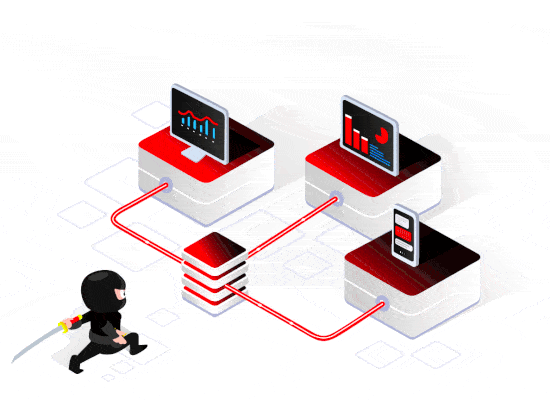Network Penetration Testing
Naturally, an intruder won’t spend months trying to force a well-locked door, but will look for weak points and vulnerabilities in those information systems where security isn’t a priority. Seemingly minor vulnerabilities may end up in serious consequences and lead to the system being compromised. The acknowledged way to reduce such risks is to employ penetration testing.
To prevent your organization from possible breaches and reinforce existing security controls against a skilled attacker, Cyanous’s team offers penetration testing services based on a custom plan of a multistep attack that targets custom network infrastructure and applications.

When You Need Penetration Testing
We recommend to fulfill a pentest in case if:
● Regularly scheduled analysis and assessments are required by regulatory mandates.
● New network infrastructure or applications were added.
● Significant upgrades or modifications to infrastructure or applications were made.
● New office locations were established.
● End-user policies were modified.
● Corporate IT was significantly changed.
ETHICAL HACKING TO PREVENT A POTENTIAL INTRUSION
Cyanous complete penetration testing designed to identify system vulnerabilities, validate existing security measures and provide a detailed remediation roadmap.
Our team, equipped with the latest tools and industry-specific test scenarios, is ready to deliver a thorough checkup to pinpoint system vulnerabilities, as well as flaws in application, service and OS, loopholes in configurations, and potentially dangerous non-compliance with security policies.
Types of a penetration test we provide:
● Network services test
● Web application security test
● Client-side security test
● Remote access security test
● Social engineering test
● Physical security test
Deliverables
At the end of the penetration testing procedure, we provide our customers with an extensive set of reports and recommendations to effectively eliminate the detected breaches:
● Brief description based on the achieved results and findings.
● List of detected system vulnerabilities and their classification according to how easy they are to exploit and how harmful for the system and business they may be.
● List of changes in the system that were implemented during testing.
● Test protocol (including instruments and tools used, parts that were checked and issues found).
● Actionable recommendations to eliminate the revealed security issues.

